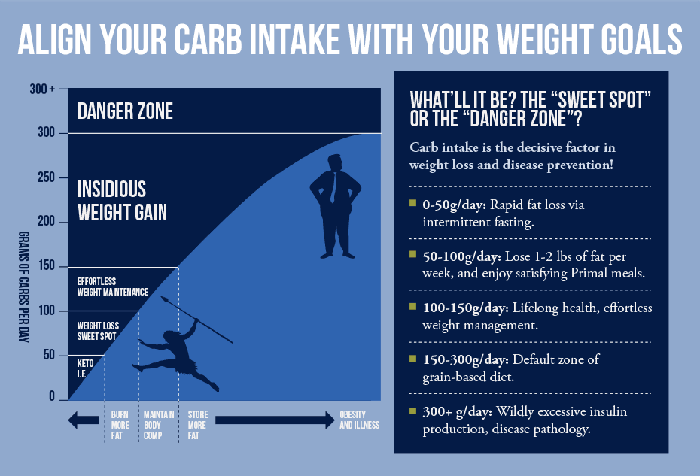It’s been several days since I wrote about picking the low hanging fruit (the simpler, foundational principles) along one’s journey to restore (or improve) your overall health and wellness. Last week I offered up some simple principles related to protein and incorporating more movement into your daily routine.
Of note, my thoughts today are aimed at those who are following an approach to nutrition and food much more aligned with the Standard American Diet (the infamous SAD approach), not necessarily those thoughtful folks who have already begun to take a hard and discerning look at the healthy – and the unhealthy – aspects of their nutrition plan.
So How Many Grams of Carbohydrate Does “the Average American” Eat Per Day?
Good question, and when you get right down to it, defining the “average carb intake” of any group or population is devilishly difficult to do with genuine scientific accuracy, though there are plenty of ways to ballpark the numbers fairly closely.
For example, let’s look at carbohydrate intake suggestions from the venerable Mayo Clinic, written in February of 2017 –
The Dietary Guidelines for Americans recommends that carbohydrates make up 45 to 65 percent of your total daily calories.
So, if you get 2,000 calories a day, between 900 and 1,300 calories should be from carbohydrates. That translates to between 225 and 325 grams of carbohydrates a day.
Impressive, particularly in light of two things: first, there are impressive numbers of individuals who consume a far more than 60 percent of their daily calories from carbohydrates. And secondly, there’s been an explosion of very credible information over the past couple of decades, more so in the last decade, frankly destroying the concept that carbohydrates are our bodies preferred, principle fuel.
That said, where does one start when looking to manage carbohydrate intelligently?
Starting Your Approach to Dialing Back Your Carbohydrate Intake
Coming from the perspective of eating the Standard American Diet (SAD), once you’ve settled on a rational approach to protein intake, for most of us, it’s time to dial back the carbs.
How far? It really doesn’t have to be that complicated, and for all the chatter about carbohydrate intake floating about these days, I still find Mark Sisson’s diagram below – his carbohydrate curve – to be one of the must useful illustrations of the concept.

If you’re eating 300 grams of carbohydrate a day, dropping down to 150 or 100 grams/day isn’t necessarily going to happen overnight. You can drop quickly, we did years ago, though we’re sorta “rip the bandage off in one quick pull” kinda people, and our process wasn’t without some cravings and missteps along the way.
Part of the mechanism of dialing back your carbohydrate intake is based upon improving the quality of the carbohydrates you consume – eating fresh, whole foods and not highly refined, overly process, carb-dense preparations is a huge part of the game here.
For a little more detail, take a look at Carbs: The Good, The Bad, and The Ugly (Part 1 is the Bad and Ugly, Part 2 The Good).
And Finally, Remember the Carb Game is Won By Finding Your Carb Tolerance Point
A critical reminder from a prior post – your optimal carb zone and macronutrient partitioning needs depend on a host of factors THAT ARE UNIQUE TO YOU; potentially including (a short list, just for example):
Your current objective(s): be it weight loss, athletic performance, cognitive improvement, general well being, longevity, etc.
Your current body composition: Are you overweight, underweight, lacking appropriate muscle mass?
Your overall metabolic health: Are you in full-blown metabolic syndrome with insulin resistance, on the edge, or “fairly healthy”?
Your overall level of activity: Are you a cubical-bound couch potato whose idea of a workout is the walk to and from the car in the parking lot, an occasional, casual walker, perhaps working a physically demanding job, or a gym rat?
Your overall general health: Do you have conditions that impact your body’s functions in a material way, such as joint problems (degenerative arthritis), heart disease or hypertension, poor sleep, or stress you can’t manage?
Your age: For example, protein requirements increase in the elderly, and the elderly’s protein requirements may be more impacted by higher activity levels.
Your current progress in your recovery journey: Your best macronutrient partitioning will change over time, pending where you are in your health and wellness journey, and as you purposefully get leaner, more fit, and thoughtful about how you fuel your mind and body.
There will be some trial and error, and some N=1 experimenting to find your sweet spot. Get started today, and we’re here to help guide you through the process if it seems a bit overwhelming. Git ‘er done.


